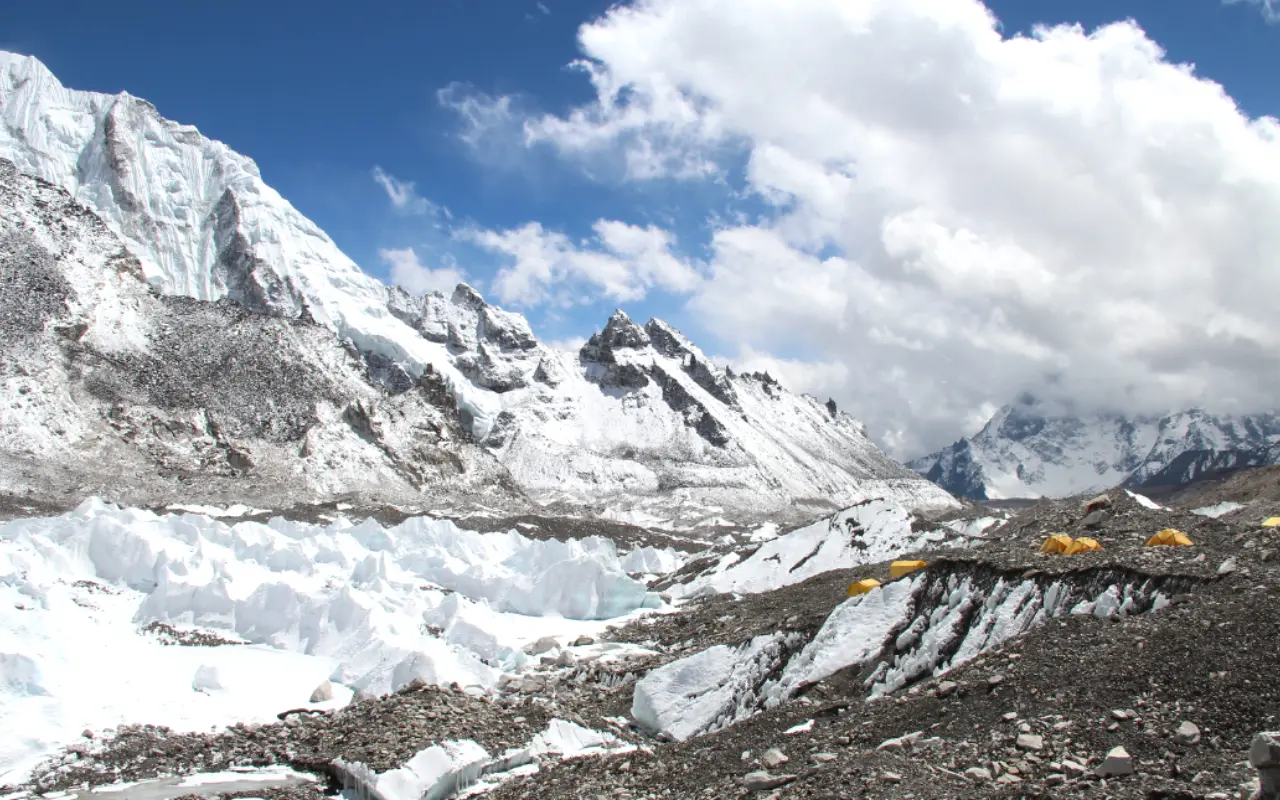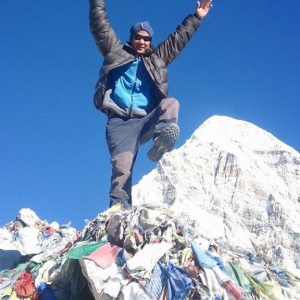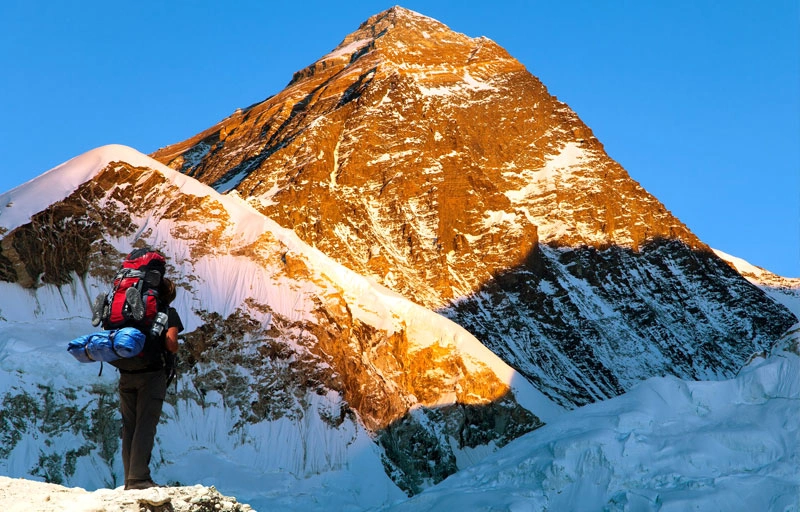How Long is the Everest Base Camp Trek? Duration, Itineraries & Time-Saving Tips

The Everest Base Camp Trek is one of the most adventurous experiences, which will take you to the breathtaking Himalayas. This place draws large numbers of trekkers each year because of its stunning scenery, which will ultimately raise the question, “How long is the Everest Base Camp trek”?
There is no exact answer about the duration of the Everest Base Camp trek because the duration will depend on the itinerary, your fitness level, travel schedule, and acclimatization. Though most of the itineraries of the Everest Base Camp trek range from 11 to 16 days.
For travelers considering how long is the Everest Base Camp Trek is, you can get a variety of short itineraries, too. However, rushed itineraries risk exposure to altitude sickness, and the experience is likely to be diminished overall.
In this guide, we’ll explore the duration of the Everest Base Camp trek to help assess the most common itineraries, including those that are speedy, and provide useful suggestions for speeding your time on the trek. Preparation is key, and will ultimately determine which route you choose, and the amount of time allotted for your adventure and well-being.
Standard Duration of the EBC Trek
The average length of the Everest Base Camp trek is usually about 12 – 14 days. This timeframe allows for an enjoyable trek while still being on a typical safety ‘pacing‘, as trekkers travel from Lukla, where the airport is part of the mountains.
If you are trying to assess how long the Everest Base Camp trek will take in terms of ascent, it will take about 8 days after you start on the trek to reach EBC. This time includes several planned acclimatization stops, which are important for your well-being and enjoyment of the high altitude.
For someone asking, how long is the Everest Base Camp trek, in terms of the return? Descending back to Lukla will generally take about 3 – 4 days. This shorter time is due to the much easier terrain and more gradual descent from altitude.
From the first step in Lukla, till you return, most people are done in approximately two weeks, which allows benefits to be gained from trekking at high altitude, while at the same time enjoying the Himalayan experience.
Sample Itinerary: 14-Day Everest Base Camp Trek
Day 1: Flight from Kathmandu to Lukla and Trek to Phakding
You will fly to Lukla from Kathmandu on an early flight. After landing in Lukla, you will make your ascent to Phakding, a Sherpa village. Along the way to Phakding, you will walk along the Dudh Koshi River and lush forested paths. You will spend Day 1 in Phakding.
Day 2: Trek to Namche Bazaar
Day 2 starts with an early hike from Phakding to Namche Bazaar, a bustling Sherpa village. A slow ascension from Phakding, crossing swing bridges and taking in the wonderful Himalayan mountain views, is how you will experience your Everest Base Camp trek adventure, increasing altitude and getting accustomed.
Day 3: Acclimatization day in Namche
This day will be spent getting used to Namche Bazaar. For breathtaking views of Everest and the surrounding Himalayas, you may trek up to the Everest View Hotel or visit the local market during the day.
Day 4: Trek to Tengboche
After spending a day in Namche Bazaar, you will ascend to Tengboche. You will walk through dense rhododendron forests and monasteries along the way. You will get an opportunity to visit Tengboche Monastery after arriving in Tengboche village.
Day 5: Trek to Dingboche
You will ascend to Dingboche from where you will get an amazing view of Ama Dablam and the surrounding giants. Dingboche is a beautiful spot to rest and to prepare for a higher elevation climb.
Day 6: Acclimatization hike (Nangkartsang Peak)
Acclimatization hike to Nangkartsang Peak to get some great views of the Imja Valley. This will also train you to be more aware of the higher elevations while also helping your body to acclimatize to the higher elevations.
Day 7: Trek to Lobuche
The path takes you up through alpine meadows, with memorials for dead mountaineers along the way, and it all again is unspeakably scenic as we catch glimpses of huge glaciers and old school iconic Himalayan views.
Day 8: Trek to EBC via Gorakshep
After passing through Gorakshep and walking to see the famous site, we finish one of the main items on our trek.
Day 9: Hike Kala Patthar, return to Pheriche
Early wake up to hike to Kala Patthar for a really incredible view of Everest at sunrise. You will descend back to Pheriche after seeing the sunrise views. This day will give you the best panoramas this region has to offer.
Day 10–13: Trek back to Lukla
Retracing your steps back to Lukla more quickly can take four days since the terrain is easier, another large cog in your adventure, which answered how long is the Everest Base Camp trek.
Day 14: Fly back to Kathmandu
Depart on an early flight from Lukla back to Kathmandu, and conclude your incredible 14-day Everest Base Camp trek with a lifetime’s worth of memories and a sense of achievement.
Alternative Trek Durations
A. Short EBC Trek (8–10 Days)
Some of the shorter Everest Base Camp trek itineraries can be completed in 8-10 days. The main difference for the ‘faster’ Everest Base Camp trek is that you will fly back from Gorakshep or Lukla via helicopter instead of trekking. The advantage of this option is that you save time, while still getting to see the incredible views at Everest Base Camp.
Shorter itineraries usually eliminate acclimatization rest days and are suited for those trekkers who are fit and who have also completed high-altitude treks before. The downside of skipping a plan for a gradual ascent to base camp is that many travelers are putting themselves at risk for altitude sickness by bypassing acclimatization.
The paced traveling on the shorter itineraries usually requires intense trekking every day while providing less time for cultural stops or beautiful detours. Many days require long hours on the trail to fit the compressed itinerary.
The short Everest Base Camp trek provides an answer to the question of how long is the Everest Base Camp trek is for those adventurers who are limited to less than a two-week trek. As with all kinds of trekking, thorough preparation and being in good physical condition are key to keeping health risks low and fun as high as possible.
B. Extended EBC Trek (16–20 Days)
Planned Extended EBC Treks with Gokyo Lakes and links to Cho La Pass can increase your adventure to about 16–20 days. The combination of additional high-altitude trekking, glacial lakes, and breathtaking Himalayan scenery makes the Everest Base Camp trek longer.
The classic Everest Three Passes Trek is itinerarily scheduled for Kongma La, Cho La, and Renjo La passes, which also increases your time to 16–20 days on the trails. It is amazing how much the Everest Base Camp trek is enhanced by the incredible experience of climbing each of these spectacular mountain passes.
Existing travelers on the Jiri/Salleri road trek will also enjoy the wonderful views of the classic Himalayan nature and culture, simply on a much longer route. How long is the Everest Base Camp trek by either of these road routes, counting almost 17–22 days with the much longer approach hikes and acclimatization.
Ultimately, if your nexus is for more amazing views and more adventure, the Everest Base Camp trek can be extended for almost three weeks. Each extension will offer you unique, under-traveled views and an entirely superior trek experience.
Factors That Affect Trek Duration

• Acclimatization needs
A crucial component of the Everest Base Camp hike is acclimatization, which helps prevent altitude sickness. It welcomes the opportunity for your body to acclimatize to the decreased amount of oxygen found at higher elevations.
Planning acclimatization days in key locations like Namche and Dingboche will allow your body to adjust physically. Utilizing a “climb high, sleep low” plan, hiking shorter days, and ending with an accumulated rest day provides safety and security to ensure success along the journey.
• Weather conditions
When trekking in the Himalaya, the weather can change greatly, which can delay or change the course of the trek. Weather conditions such as heavy rain or snow, or intended poor visibility from fog, may require the trekker to take a day off or wait for the expected weather, which could change the degree of the itinerary.
The spring and autumn seasons are easier, stable seasons to trek, while summer will yield wet trails, and winter adds travel and time delay. Be sure to keep informed with weather forecasts and pack possible multiple-use gear, as adaptations can lead to varied conditions.
• Flight delays to/from Lukla
The Everest Base Camp trek starts and ends with a flight to Lukla, a town that takes its weather and climate from the unpredictability of the mountains. The limitation of a short mountain runway means that flights to and from Lukla may often be delayed or cancelled. Any delays here can be prolonged and can affect the overall trek length.
The Trekking agencies always advise booking extra days at the end of your trek to allow for unforeseen disruptions or delays. If you are flexible, it helps you to avoid stress, worrying that flight delays may cause you to miss your international flight, from Nepal or from back home.
• Fitness and pace
Your fitness level and trekking pace have a direct impact on how long a trek will take. Trekkers with higher fitness levels can carry out long walks of 5 to 8 hours a day with a lot more ease than a trekker of a lower fitness level. They are also subsequently more able to stick to the schedule or finish that trek with time to spare.
It is not a good option to trek fast. You should always allow for an adjustment to a higher altitude. It’s best to be relaxing, steady, and manage an appropriate speed that best allows you to have a good time, enjoy yourself, and enjoy a healthy experience.
• Side trips and rest days
Adding side trips to a trek, such as hikes to destinations offering scenic and panoramic views, or to explore local villages, will expand your trek duration by at least a couple of additional days, but mostly will just add to your experience. Each additional side trip means your trek has taken longer.
Scheduling additional rest days for recovery, as well as to explore towns being travelled through offers flexibility, but this ultimately adds to the length of the combined journey.
How to Save Time on the EBC Trek
Choose a helicopter exit from Gorakshep or Kala Patthar and thus save three days of descent while avoiding the long trek back to the village. Furthermore, the helicopter flight will provide further breathtaking views of the Himalayas and give a little bit of comfort at the end of the journey.
You can avoid the unpredictable mountain flights by adding a jeep ride to or from Salleri with your Lukla flight. If you take this option, you will still avoid having to cancel flights, and you will be able to take advantage of a flexible schedule with two different scenery views on the route.
Jeep routes enter the Everest region via Salleri or Phaplu, both of which join the main trail farther on. Jeeps also allow you to skip the long, less-scenic sections below and therefore fit the trek into schedule constraints without sacrificing the essence of your Everest Base Camp trek.
Taking a helicopter ride will help you save time from long days of walking. This is by far the best way to maximize your time and experience the best views along the Everest Base Camp trek.
How Many Days Should You Plan for the Entire EBC Experience?

If your Everest Base Camp trek will take 16 to 18 days to complete, then plan extra buffer days, in case any delays occur.
The weather in the Lukla region is unpredictable, which can add a challenge if flights get cancelled. It is not uncommon to get flight cancellations in and out of Lukla, so it is best to add 1-2 days.
Altitude adjustment is another important factor for safety and attaining your trek goals. Adding extra acclimatization days, primarily in Namche and Dingboche, will help you minimize the risk of altitude sickness.
Not only is it helpful to gather trekking gear in Kathmandu, but you will also see many more interesting cultural sights and experiences that are in Kathmandu. We would encourage an additional 2-3 days of sightseeing “in” and “out” of the trek; you deserve to see, experience, and recover from every trek to Everest Base Camp.
With the trek, additional days for either flights, acclimatization, or sightseeing, we believe between 16 and 18 days is an optimal experience for both new and experienced trekkers to the Everest Base Camp path.
Conclusion
The average trip to Everest Base Camp takes 12 to 14 days to finish. However, the absolute best is 16–18 days so that you get some buffer and also time for acclimatization. The necessity of being flexible with the conditions cannot be stressed enough because of the weather, flight delays, and the fitness of the individual.
Putting health and safety above speed not only gives a more pleasant experience but also greatly lowers the chances of getting altitude sickness. Acclimating for a while ensures that your trip remains safe and delightful.
It is worth noting that the trip is just as important as the destination. If you take it all in along the way—beautiful scenery, local customs, and your personal development, making your adventure will truly be memorable.





